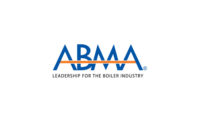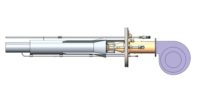As boiler manufacturers shift their focus from regional to global sourcing, and procurement and new regulations are adopted around the world, new safety shutoff valve technology has emerged.
These crucial fuel train components are designed to improve the safety, reliability, energy efficiency, and cost-effectiveness of boiler installations. As a result, these changes will impact a wide range of applications, including (but not limited to) the following:
- Direct-fired heater;
- Annealing treatment;
- Paint curing system;
- Catalytic reactor;
- Flare stack;
- Incinerators;
- HVAC utilities;
- Boiler systems;
- Food dryers;
- Furnaces;
- Ovens; and
- Kilns.
New shutoff valve capabilities
This new generation of safety shutoff valves offers several important features that have great benefits for boiler manufacturers, installers, and end users, including:
- High flow rates — Designers changed the curvature, volumes, and capacities to optimize the flow, not only through the valves but also through the entire fuel train.
- Minimized pressure drop — As natural gas flows through the fuel train, pressure drops through any device (i.e., elbow or bend in the pipeline). This can be an issue for the user when inlet pressure is low, yet demand needs to be maintained in order for the boiler or any unit operation to function. The highest level of pressure drop occurs through the double safety shut-off valve, and due to high coefficent of flow (CV)/flow ratings in new shutoff valves, the pressure drop is minimized.
- Handling a wide range of pressures — The new valve has a close-off pressure rating of up to 75 psi, which means it reliably performs in low-pressure applications common in densely populated metropolitan areas, like New York City, as well as high-pressure applications subject to high system pressure spikes, typical in remote locations in Canada, Minnesota, or the Rockies.
- Valve proving — Valve proving is a protocol that opens and closes the main shutoff valves (double block and bleed arrangement) in the proper sequence and monitors pressure in the gas pipe between the two safety shut-off valves. This ensures there’s no gas leakage across the train. Valve proving improves energy efficiency by eliminating greenhouse gas emissions and further reduces vent piping. Published gas capacities enable users to seamlessly run a valve proving protocol on the fuel train.
- Compact, monoblock designs — New valves are smaller than previous models and can be mounted in any position, even upside down. They can weigh only 25% as much as existing products. Plus, only the end connector is threaded, not the valve, so the same valve can be used with either NPT or ISO end connectors. The monoblock design also allows two valves to be placed in a single body casting.
Compliance with global regulations
As a result of these substantial upgrades, the new valves address a host of different issues that are important to the industry.
With the Combustion Safety Devices standard (CSD-1) now being adopted in most states in the U.S., equipment manufacturers currently face a wide range of national and international standards. In addition to this standard, global OEMs now have to comply with National Fire Protection Agency (NFPA), Underwriters Laboratory (UL), Canadian Standards Association (CSA), Factory Mutual (FM), Restriction of Hazardous Substances Directive (RoHS), and European Standard EN161.
The standards not only apply to boiler manufacturers but also to their suppliers. As boiler manufacturers increasingly move from regional to global in scope, obtaining components that comply with all of these standards will prove to be quite a procurement challenge. New valves often meet all global requirements, simplifying design across all regions.
Improved safety
The high close-off pressure rating means the valves won’t leak when subject to spikes in pressure up to 75 psi. in remote areas. The new technology is also rated to continue functioning in harsh environments with temperatures ranging from minus 40° to 150°F.
In addition, these valves are available with National Electrical Manufacturers Association (NEMA)-approved Type 4 enclosures, safeguarding against outdoor elements, like rain, debris, and dirt.
Increased reliability
As noted above, the high flow rating combined with the minimum pressure drop allow a system to keep running both in remote locations with high pressures as well as urban areas where the pressure can be quite low. No matter what pressure is available, whether it’s high or low, new safety shutoff valves still meet the demands of the boiler or HVAC unit.
Strainers are also built into the valves, aiding in removing debris that might damage not only the valve but other parts of the fuel train.
Energy savings
Higher flow rates reduce the naturally occurring pressure drop as natural gas progresses through the fuel train, thus boosting energy efficiency in newly introduced valves. And, of course, it ensures uninterrupted heat supply, even when gas pressures are low.
New designs easily integrate with valve proving systems, which electronically check valve seat integrity and eliminate the need for vent piping. With the elimination of vent piping, greenhouse gas emissions associated with unburnt fuel release are significantly reduced.
In addition, the actuator can modulate the opening and closing of the valve, depending on the firing rate. An actuator can be placed in the low or high fire position, using only the energy needed and avoiding the waste that happens when the boiler doesn’t need firing at 100%.
Fewer and less expensive components
The increased flow of new designs allows system designers to reduce the size of the components they use when they’re designing a new fuel train. For instance, instead of specifying a 2-inch pipe, designers can use a 1 ½-inch size and potentially downsize all additional fuel train instrumentation, including regulators, butterfly valves, and more, providing cost savings for assemblers, OEMs, and end users.
Because of higher turndown ratios, new valves can handle a much broader range of pressures. As a result, only two of the newly developed valve configurations are needed to handle the normal pressure ranges found in today’s combustion systems. And, because these new valves are threaded only in the end connector and not in the valve body, OEMs, installers, and even end users only need to stock two body sizes at most. Current product lines have the thread integrated within the valve body, so customers have had to stock as many as eight part numbers to cover the full range of valve sizes.
This new valve design will lead to a decreased number of SKUs and a significantly lowered delivery lead time.
Easier installation
New products can be mounted in 360 degrees, meaning they can be placed in any orientation, even upside down. Plus, the valves’ smaller footprints and lighter weights make it easier for installers to place them in retrofit situations or tight spaces.
And, by allowing two valves to be placed in one body casting, the monoblock option decreases the amount of labor. In addition, new equipment is often backward-compatible with legacy products, which significantly reduces or even eliminates the piping rework often required with field retrofits and replacements.
The use of end connectors eliminates the need for a pipe union, and bolting areas are intelligently placed in areas that are easily accessible with a wrench. Other designs may include screws or washers in harder-to-access areas that require the use of a hex key (Allen wrench). That means it only takes one person to do the installation onto a pipe train, which offers significant labor savings.
And, while customers can mount a vent line if they choose, the valve proving feature allows them to eliminate venting, saving the time and expense of installing a vent pipe through several floors of their buildings.
Significant benefits
New valve technologies offer significant improvements to the entire industry. Improved safety shutoff valves mean easier installations for contractors; lower costs for OEMs; greater efficiency for end-users; and a safer, cleaner, more reliable gas combustion system for everyone.







